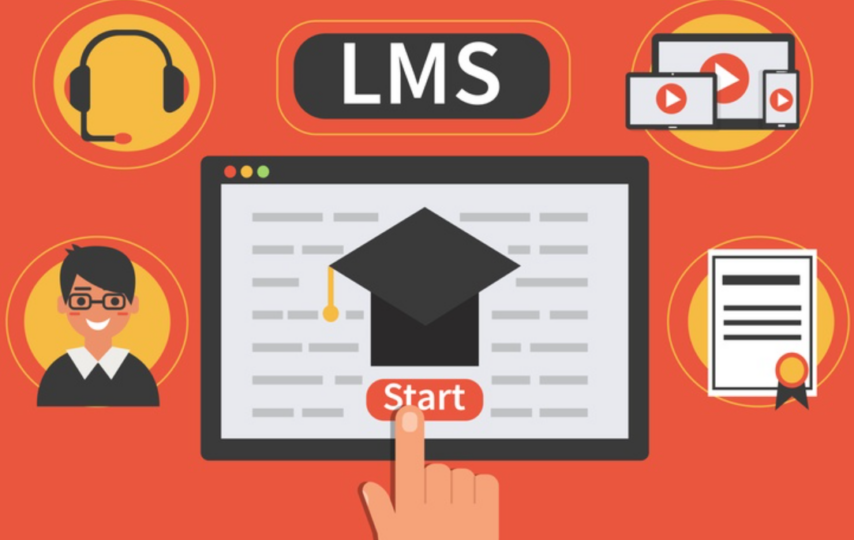Learning Management Systems significantly transformed the education industry in recent years. When several years ago, many industry professionals didn’t even know what does LMS mean; now, almost every institution or organization uses these e-learning platforms for creating, managing, and delivering online courses and training programs. But with a robust variety of options available on the market, choosing the right platform can be a tricky task, especially for newcomers who only recently discovered what LMS stands for. In this guide, we will try to cover the main aspects of navigating the Learning Management Systems market and making informed decisions that align with your specific needs.
Understand Your Goals and Requirements
Before diving into the vast array of LMS options, you need to define your goals and set requirements clearly. Consider what educational objectives you aim to achieve, consider the size of your institution and potential number of users, identify the target audience, evaluate administrative requirements, and determine your budget. With a clear blueprint for your LMS platform, you will be better equipped to evaluate and choose a development services provider and create e-learning solutions that will align with your specific needs. Creating a list of absolutely essential features and functionalities and a list of things that is “nice-t0-have” but can be added later will help you to come up with more comprehensive and realistic requirements.
Research LMS Options
Once you have a clear understanding of your goals and requirements, it is time to research available options. But basic knowledge of tech aspects, like what does LMS mean in the modern educational landscape or a list of core features, won’t be enough at this stage. Start with learning the difference between commercial and open-source Learning Management Systems. First are developed and supported by dedicated companies, also called vendors, when open-source LMS are freely available for use, and their source code can be easily modified to fit unique needs. The second option requires more technical expertise for proper setup and launch but offers more flexibility and cost-effectiveness, unlike commercial LMS, which often requires additional service fees and can’t be modified without the vendor’s involvement. If you are unsure what option is better for your specific goals, conduct some research, read the product’s documentation, try demo versions if available, and read customers’ reviews.
Source: pixabay.com
Evaluate Key Features
After you compose some type of shortlist and decide on what type of LMS you want to use, you can go to evaluate the critical features of each option. Thoroughly examine course management capabilities, ensure that administrative tasks can be streamlined, and content management tools are easy to use. Look for features that enable the creation of various types of content, especially multimedia ones. Evaluate discussion and collaboration features offered within LMS, with these features being crucial for modern teaching approaches and creating a more engaging learning environment. Pay attention to assessments and grading tools, and make sure that the Learning Management System supports various types of assignments and offers automated grading workflows to save valuable time for your teaching staff. Consider analytics, tracking, and reporting features included in the LMS setup. Check if the platform is optimized for mobile devices to ensure more accessibility and seamless user experience. Finally, find out more about the level of customization and personalization LMS offers to ensure that the platform will align with your visual branding and educational objectives.
Scalability and Integration
Among the most critical factors to consider while evaluating LMS options are scalability and integration capabilities provided. Scalability will allow you to modify a platform for increasing or decreasing the number of users without compromising performance and user experience. Assess your potential user capacity, evaluate whether LMS solutions can handle a diverse range of courses and disciplines, determine how the system handles high traffic and heavy usage, and examine LMS upgrade and update processes in terms of performance. Integration capabilities are crucial for seamless data flows and collaboration between different systems, which are vital for providing a more cohesive learning environment. Pay attention to such factors as the ability to integrate with your existing student information system, third-party content libraries, video conferencing and other communication tools, APIs and web services, and custom systems.
Source: pexels.com
Support and Training
Successful implementation of any Learning Management System heavily relies on support and training by development services. To ensure a smooth transition and optimal utilization of LMS, evaluate such aspects as support channels provided by developers, availability and quality of documentation and online resources, training options for employees, level of implementation support, commitment to ongoing support and maintenance, user community and forums, and customer feedback and reviews. Pay attention to any additional fees for training and support. By thoroughly examining all options, you can choose the LMS platform that provides the necessary guidance and assistance.
Security and Data Privacy
Ensuring the security and privacy of sensitive data is of utmost importance when you select the LMS platform. Verify if the Learning Management System employs encryption techniques to protect data during transmission and storage adequately. Assess user authentication mechanisms provided within LMS, and look for robust solutions like single sign-on or multi-factor authentication. Consider the access control features and secure hosting options. Carefully review developers’ data privacy policies and make sure they align with the principal regulations. Also, check if LMS complies with relevant industry standards of information security and certifications. Assessing the platform’s data backup and recovery mechanisms is very important too. Finally, inquire about vendors’ or developers’ security audit practices, vulnerability management protocols, and data ownership policies. In this digital age, you can’t focus on cyber security too much and robust data protection protocols and procedures will ensure your company’s reputation and users’ trust.
Final Thoughts
Choosing the suitable LMS is a critical decision for any organization or institution that can significantly impact the teaching and learning experiences. Just remember to set precise requirements and objectives to search in the right places. With basic knowledge of types of Learning Management Systems and their core features, you can easily find the perfect platform for your needs and goals.







